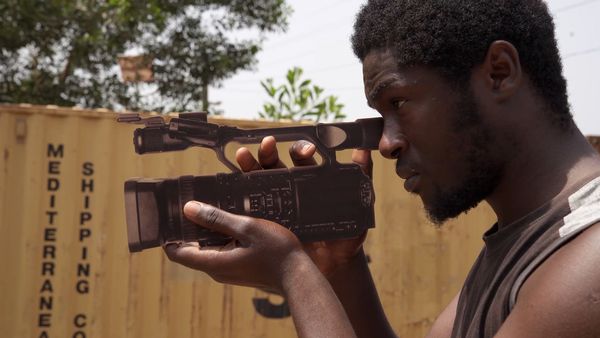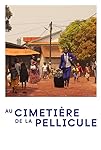Eye For Film >> Movies >> The Cemetery Of Cinema (2023) Film Review
The Cemetery Of Cinema
Reviewed by: Jennie Kermode

Thierno Souleymane Diallo’s former film tutor tells him that Guinea was once the capital of African cinema. What happened? His own students now struggle to come up with a list of seven Guinean filmmakers, some of whom are dead or work overseas. In this documentary, which screened as part of the 2024 Glasgow Film Festival, Diallo sets out to locate a copy of the first ever film made by a Black Guinean; and in the process, his own film emerges as the potential herald of a national cinematic revival.
Mouramani, directed by Mamadou Touré in 1953, is a film which many older people have heard of and some have seen, but nobody seems to know what happened to it. It was made when the country was under French colonial rule, and that was three coups, a civil war and two epidemics ago. Though rich in natural resources, Guinea is now saddled with heavy debts and poverty is rife. One woman here recalls film cameras being sold off to people who wanted to use the aluminium from them to make pots and pans. “Our kids don’t know the pleasure of going to the cinema,” one man laments, and yet older generations do remember and, amongst the young, there is a real enthusiasm for learning.

Relics of past cinemas can be found in all sorts of places. Reels of film lie in heaps in back rooms, caked in dust. Former managers and ushers share their memories as the unspools them, looking at the frames directly to see if he recognises anything. in one, he finds a porn film. Elsewhere, a village wise man says that he misses cinema; he really wants to see films about the daily lives of people he can relate to, but the perverted videos sought after by the young have ruined it all. Later, an elderly censor recounts his devoted work for the party – and therefore for the people – in cutting out and destroying inappropriate material. His concern was with politics but, he says, every film has a political aspect.
In the villages, Diallo travels by donkey, pursued by a horde of children fascinated by his equipment. He will later give some of them the chance to make a film of their own, which proves to be both exuberant and tragically close to the recent past. A teenage boy proudly shows us his two month old puppy, and we learn that Mouramani focuses in part on the relationship between a man and his dog. Eventually, Diallo will travel far beyond the villages, to another country, to continue his quest, going to lengths few documentarians would consider - but what he learns there will reveal that the real answer lies back home.
At the Guinean film school which has funding to run for just a year, there is no money for cameras, so the students practice framing shots using wooden cut-outs. It’s an exercise which others might do well to adopt. How does one make cinema without equipment? They film with their eyes, record sound with their ears, edit in their heads. Their classroom discussions reveal as sharp an understanding of the art as you’ll find in any such space. They focus on the fundamentals and they understand what cinema is for. One day, with just a little support, this country will explode onto screens around the world will a rush of talent.
Reviewed on: 11 Mar 2024















